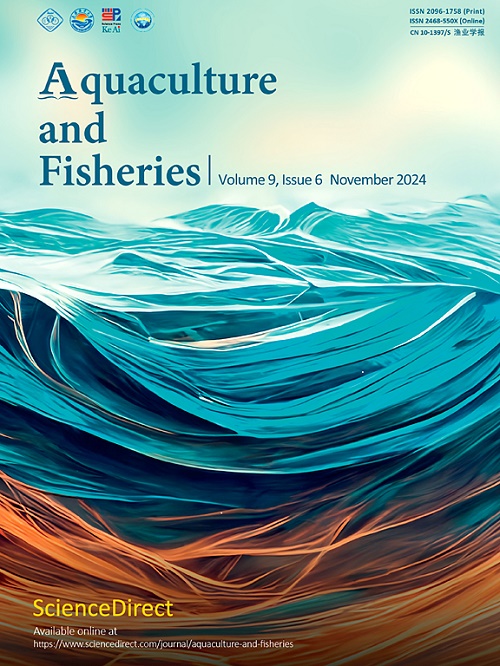Performance and gut microbiota of catfish (Clarias gariepinus) fed powdered Moringa oleifera leave as additive (Probiotics)
Q1 Agricultural and Biological Sciences
引用次数: 0
Abstract
The antimicrobial activity of powdered Moringa oleifera leaves on the performance of Clarias gariepinus juveniles was investigated. A total of 180 C. gariepinus hatchery-bred juveniles were obtained, acclimated in a 4 × 4 × 3 feet concrete tank, and fed adlib with 1.5 mm Coppens for one week. Initial mean weight (g) and length (cm) of sample fish were measured and randomly distributed in triplicates of 15 fish/tank into twelve concrete tanks of dimension 4 × 4 × 3 feet (T1A-C – T4A-C). Four treatment diets were formulated, by adding graded levels of powdered M. oleifera leaf to the fish feed, using starch as binder. T1 (control) had no moringa inclusion (control), while T2, T3, and T4 respectively had 5 g, 10 g, and 15 g/kg inclusion. Length (cm) and weight (g) of fish were measured fortnightly, while haematology and serum profile, bacteria in the gut were collected at the end of the study. One-way Analysis of Variance (ANOVA) was used to analyze the data, and Duncan's multiple range test was employed for mean separation. Results revealed a significantly higher growth response in T3 compared to other treatments (P < 0.05). Haematological and seriological profile showed a boost in immunity of fish fed with the additive. Bacterial load in the fish gut was significantly reduced (P < 0.05) as inclusion of additive increased. Therefore, for optimum fish production addition of 10g of M. oleifera/Kg of feed is recommended, as it gave the best result in terms of growth (P < 0.05).
辣木叶粉添加(益生菌)对鲶鱼生产性能及肠道菌群的影响
本文章由计算机程序翻译,如有差异,请以英文原文为准。
求助全文
约1分钟内获得全文
求助全文
来源期刊

Aquaculture and Fisheries
Agricultural and Biological Sciences-Aquatic Science
CiteScore
7.50
自引率
0.00%
发文量
54
审稿时长
48 days
期刊介绍:
 求助内容:
求助内容: 应助结果提醒方式:
应助结果提醒方式:


